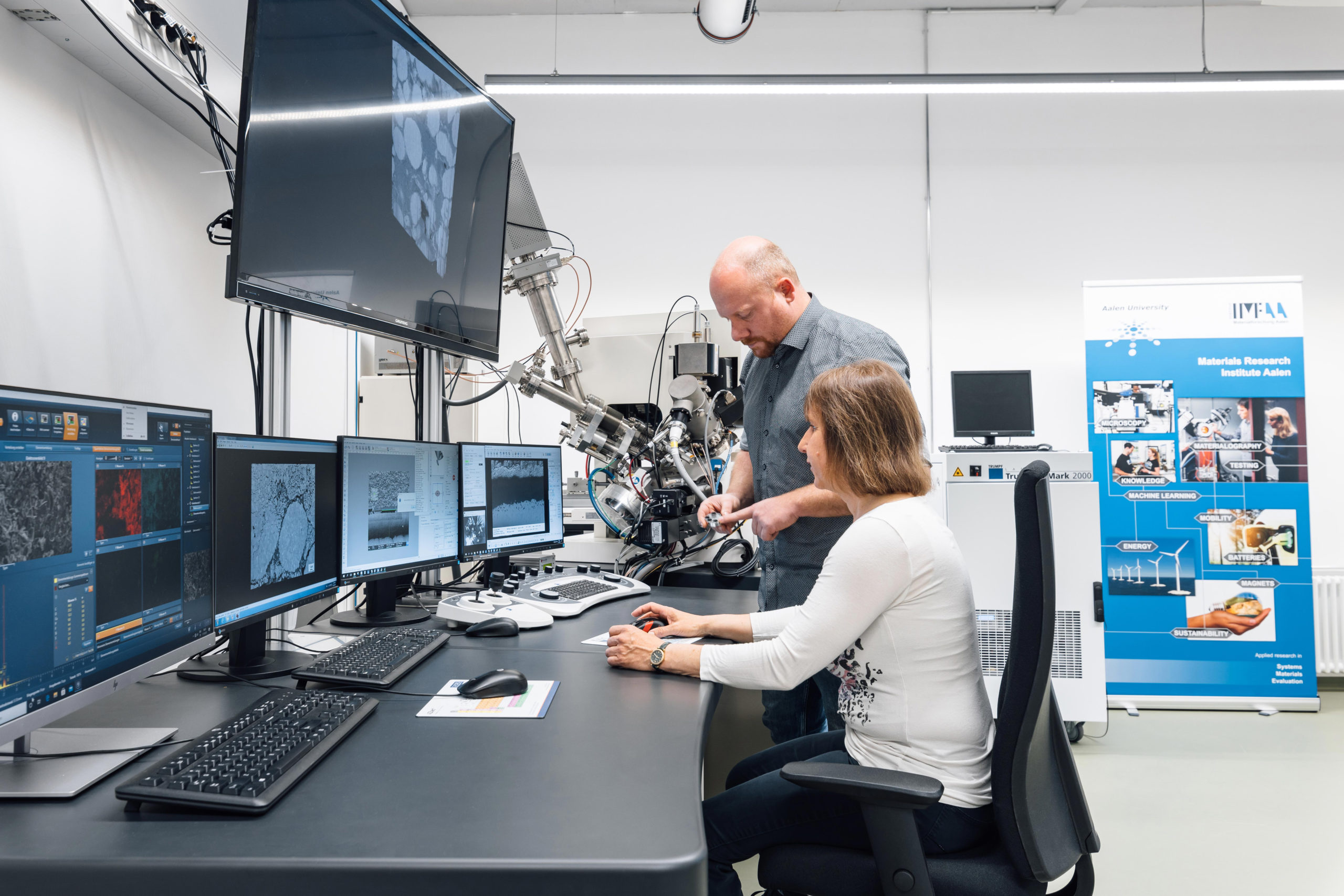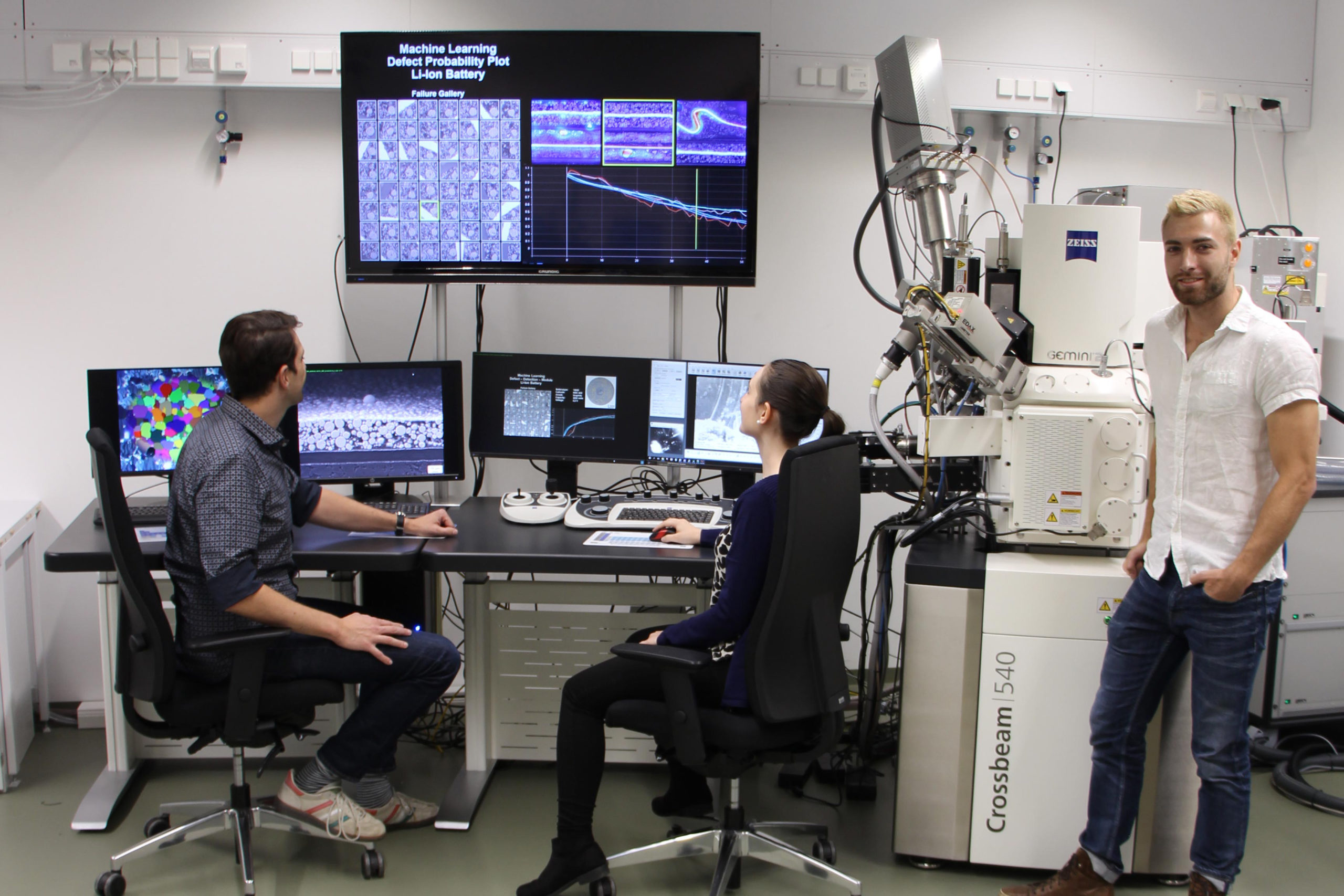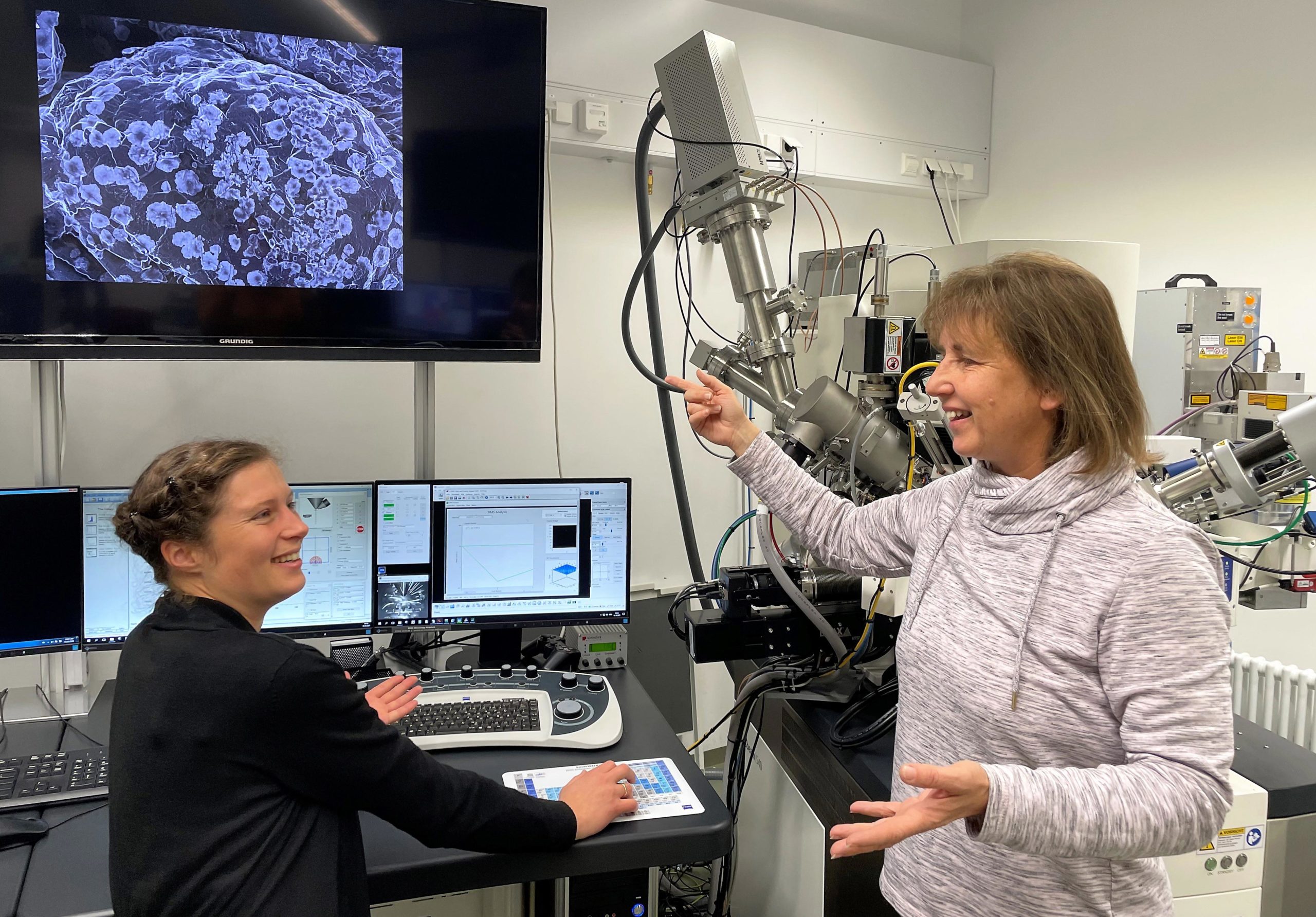We at IMFAA are extremely grateful for the cooperation and the resulting support of our research by Hiden. Our institute is located in the new research building at Aalen University / in southern Germany and we are a team of about 80 scientists, PhD students, Master students, Bachelor students and research assistants. Thanks to Hiden, we are able to do research on a SEM-SIMS combination at the institute for more than two years now.
 |
 |
Source of Photos: Jan Walford (photographer), Gartenstr. 2, 73430 Aalen
This SEM-SIMS combination enables us to perform mass spectrometric investigations with high lateral resolution. It allows to detect light elements, such as hydrogen and lithium. SEM-SIMS is particularly interesting and helpful in the investigation of battery materials. And battery research and improvement is one of the research priorities at IMFAA.
Lithium is very important for post-mortem analysis of lithium-ion batteries and can be detected with SIMS. A normal standard EDS system cannot detect lithium at all.
I, Gudrun Wilhelm (pictured left on IMG_7523), am a PhD student at IMFAA and work with the SEM-SIMS combination. My topic are the aging mechanism of lithium-ion batteries. For example, I systematically compare aged batteries with new batteries after storage at defined temperature and cycles. I open and prepare the cells in the glovebox and examine the surfaces with high lateral resolution, for example with SEM, EDS and SIMS. The SEI and CEI are formed on top of the anode and cathode, respectively. These layers react as interfaces and change due to aging processes. The analysis of these layers can be used to investigate aging processes.

Source of the Photo IMG_7523: Andrea Heidel, HS Aalen
With all our data, we are, among other things, part of the Germany-wide “Battery Research Factory” and contribute to making batteries even faster chargeable, safer and more durable, for example for electromobility. In this way, we are helping to advance the energy transition, conserve resources such as rare earth metals and ultimately protect the climate.

